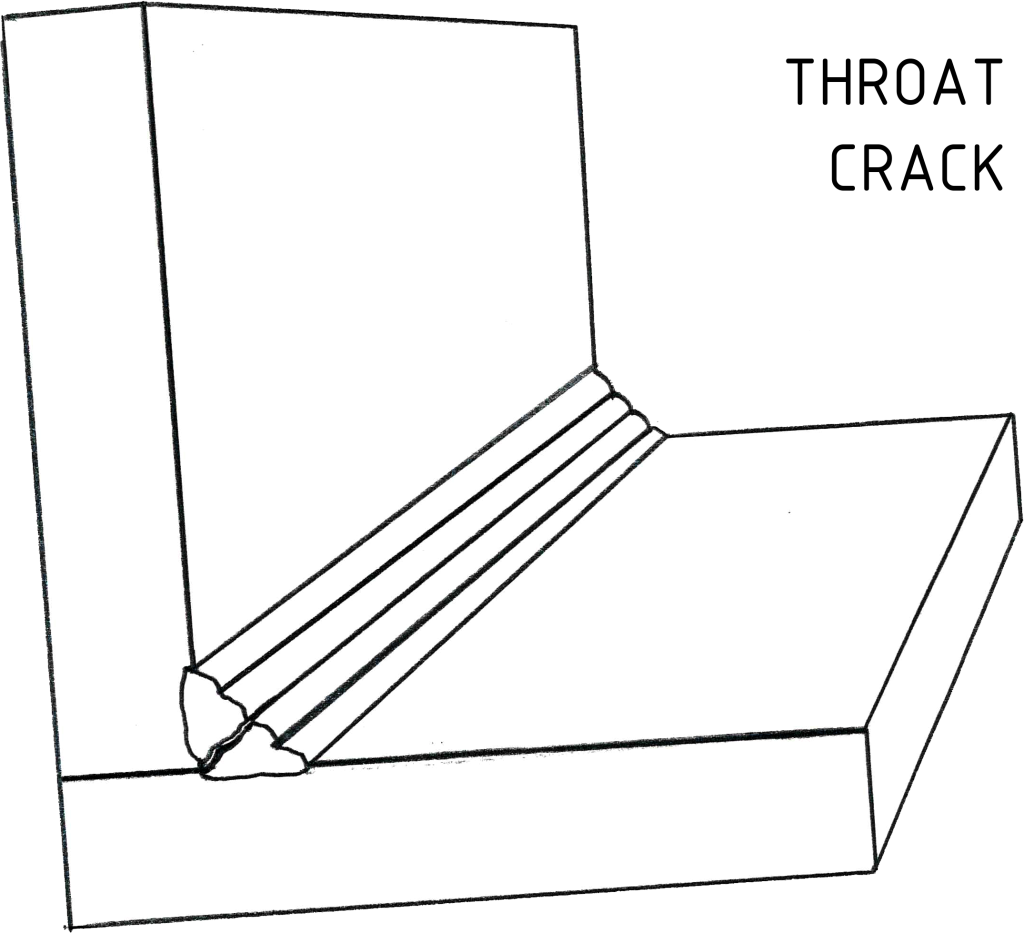48 Throat cracks
Throat cracks are longitudinal, hot cracks in the middle of the surface (throat) of a weld, extending toward the root of the weld. They appear as relatively long cracks along the center line of the weld and are confined to the center of the weld.
Throat cracks may be the extension through successive weld passes of a crack that started in the first pass (root pass). A throat crack that starts in the root pass and is not removed or completely re-melted before deposition of the next pass tends to progress into it and then to each succeeding pass, until it appears at the surface. Final extension of the crack to the surface may also occur during cooling after welding has been completed.
Visual examination (VT) is often an adequate method of detection because throat cracks are usually open to the surface.
Throat Crack Prevention
Throat cracks are prevented by using joint designs that reduce joint restraint and excessive stresses in solidifying weld metal. The weld groove dimensions must be adjusted to allow deposition of a sufficient amount of filler metal to overcome excessive joint restraint.
The welding process variables must be adjusted to permit correct weld bead size for the joint thickness, sufficient heat input, and optimum travel speed to prevent excessive stresses during solidification.
Prevention may also be achieved using a more ductile filler metal or reducing the cooling rate through application of preheat.


